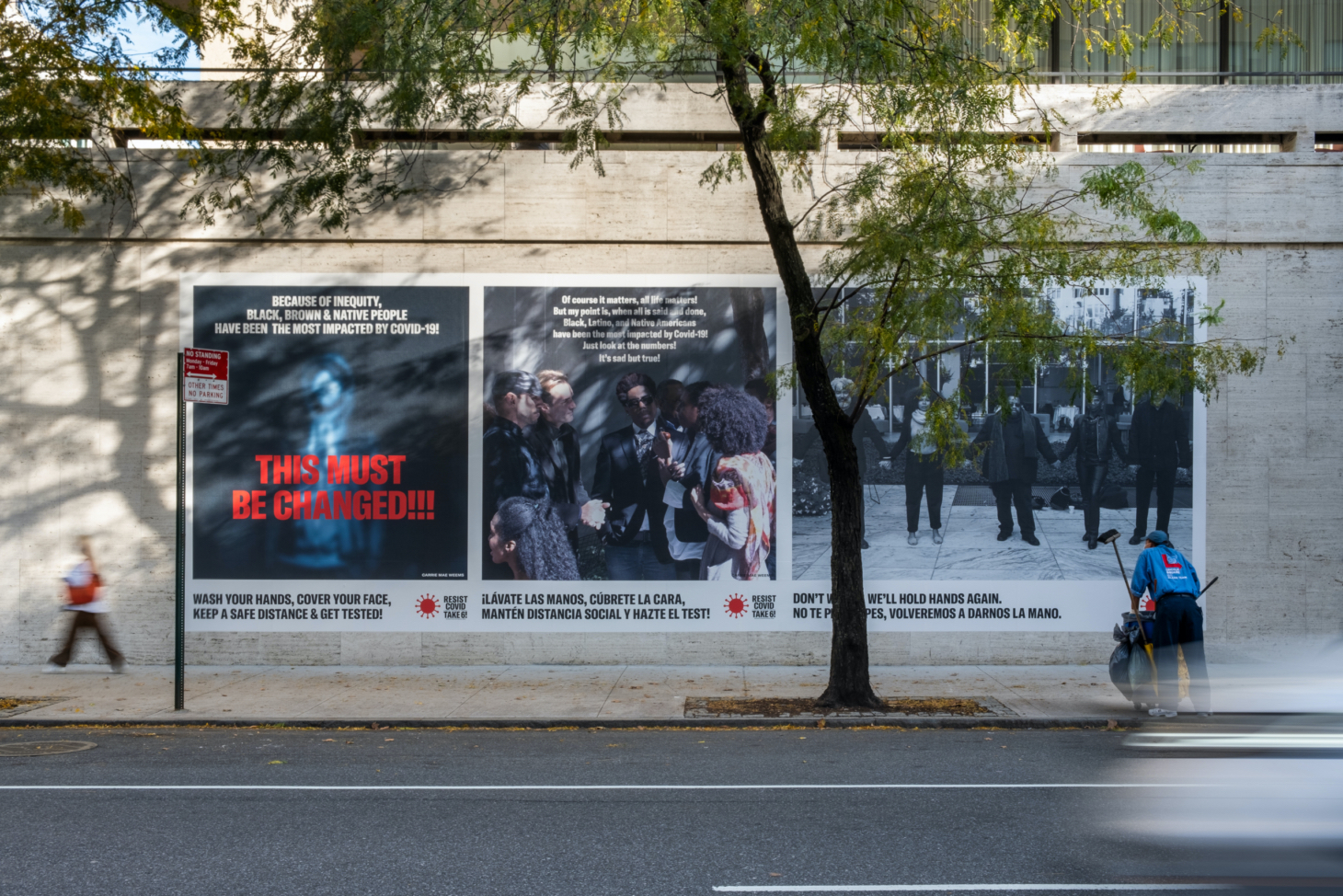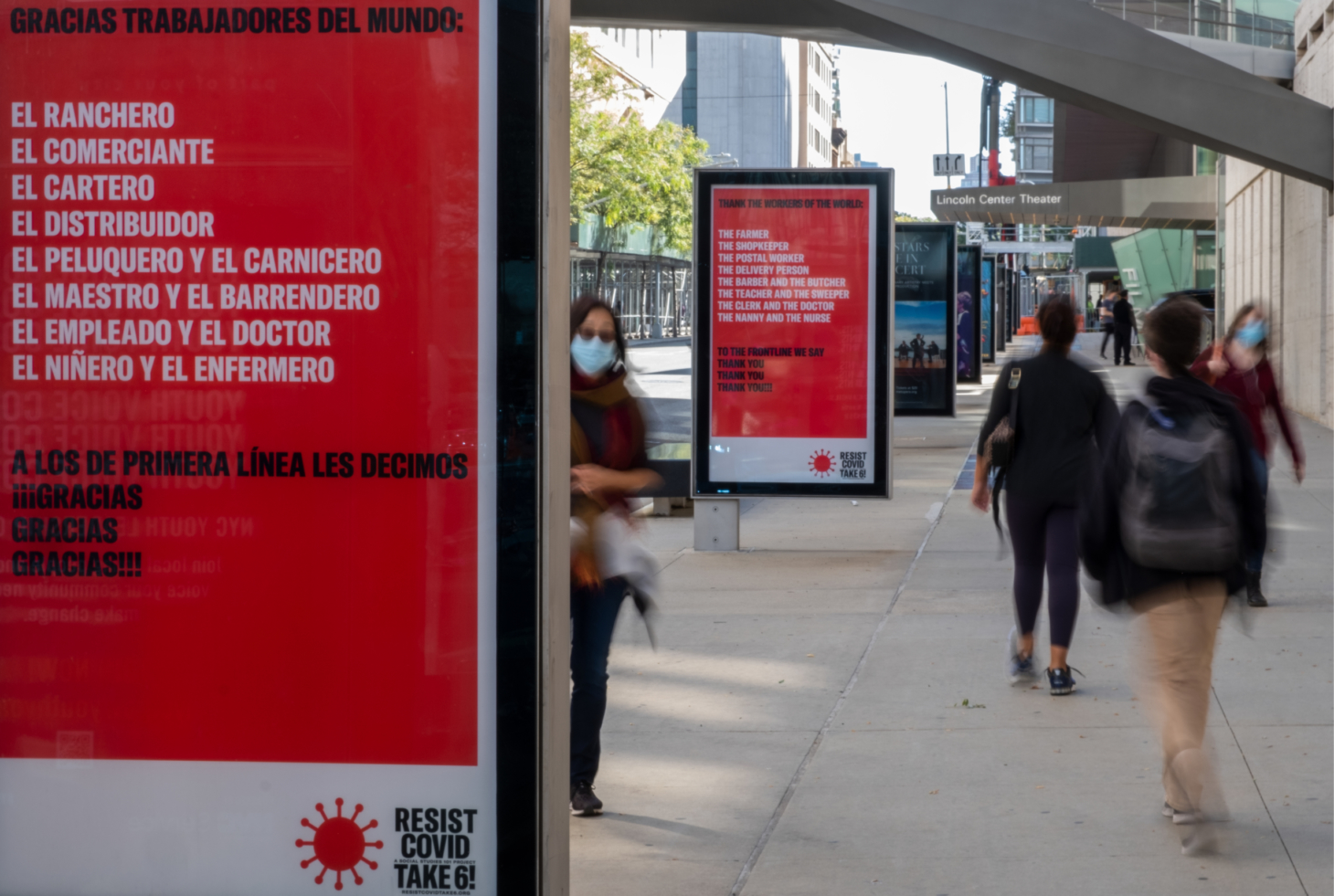The coronavirus pandemic is disproportionately affecting BIPOC communities. Studies show that one in 2,150 white Americans have succumbed to the illness; compare this to one in 1,020 Black Americans, one in 1,220 Indigenous Americans, and one in 1,540 Latinx Americans. With an eye-grabbing public art installation opening at New York’s Lincoln Center, the artist and MacArthur “Genius” Award winner Carrie Mae Weems aims to educate about the pandemic’s devastating impact on increasingly vulnerable BIPOC communities while disseminating crucial information to further prevent its spread. Titled Resist Covid | Take 6! in a nod to six feet of social distancing, the outdoor banners pair evocative text (“Don’t worry, we’ll hold hands again”) with her own photographs to reiterate the importance of preventive measures while fostering public dialogue and thanking frontline workers.
According to Weems, Resist Covid | Take 6! will function as a public service campaign to constantly remind everyone of the actions needed to push through the pandemic. “It’s really about trying to assist saving lives by systematically informing people over and over and over, even when our president won’t, the basic things that they must do in order to survive this pandemic,” Weems tells the Philadelphia Inquirer. “I’m really trying to go for people simply taking the required actions needed for their survival.” The banners and billboards balance a sense of urgency (i.e. bright red uppercase typeface), with the friendly, can-do spirit often portrayed in her photographs. The overall message is congenial and welcoming, yet no-nonsense.
Weems first conceived Resist Covid | Take 6! during an artist residency at Syracuse University with her friend Pierre Loving. “I thought, ‘How can I use my art and my voice as a way of underscoring what’s possible, and bring the general public into a conversation, into heightened awareness of this problem to better the community in which I live?” The campaign popped up on billboards around Syracuse in April before getting picked up by local radio stations and social media. Its success led to expansions into Dallas–Fort Worth, Atlanta, Chicago, Detroit, Nashville, and Philadelphia, where she partnered with museums, universities, and health clinics to spread the word even further. “We needed lawn signs; we needed posters to go into business windows; we used newspaper advertising circulars to deliver messaging directly into the home,” Weems recalls. “We used grocery bags, shopping bags, paper and reusable bags that we could give to food banks.”
Perhaps the campaign’s popularity lies in its straightforward messaging. Whereas billboard art by the likes of Félix González-Torres and Jenny Holzer are effective and subversive in their own right, Resist Covid | Take 6! feels less like a museum-worthy group of artworks than a bona fide series of public service announcements that are at once emotionally gripping and easy to grasp. And even though many Americans today seem skeptical of “official” messages, Weems says that the impact of Covid-19—especially within BIPOC communities—is undeniable. The disease, she says, “affords the nation an unprecedented opportunity to address the impact of social and economic inequality in real time. Denial does not solve a problem.”
Other Resist Covid | Take 6! installations are on view across New York City at the Apollo Theater, the Brooklyn Museum, and the New School. The installation at Lincoln Center, which features messaging in both English and Spanish, will display until the end of the year.



